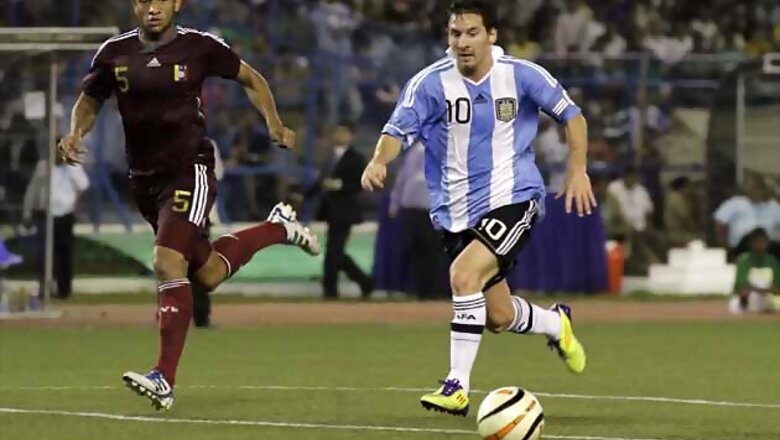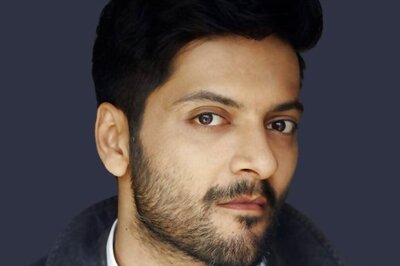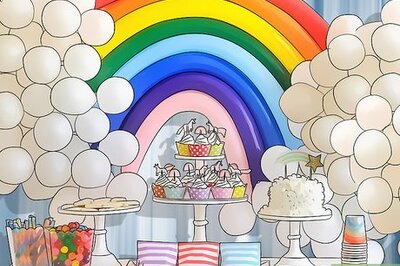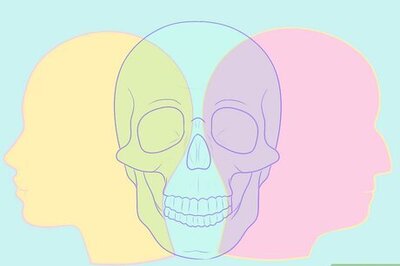
views
Frankfurt: After a rollercoaster ride under Diego Maradona followed by Sergio Batista's failed attempts to imitate Barcelona, Argentina are once again beginning to look a threat to the world's top sides.
This time last year, the blue-and-white striped shirt appeared to act as a millstone around Lionel Messi's neck, transforming him into a forlorn figure shorn of his Barcelona exuberance.
Since then, coach Alejandro Sabella has found a formation which, although still vulnerable at the back, is capable of giving Messi the ball in his favourite position around 25 metres from goal, allowing him cause mayhem among opposing defences.
Argentina have won their last five games, continuing the run with their 3-1 win away to Germany on Wednesday, and Messi has scored nine times in those matches, including two hat-tricks.
Despite missing a penalty, Messi led the Argentine attack, got on the scoresheet in the second half and helped the South Americans create a hatful of chances, albeit against a German side down to 10 men since the 31st minute.
"The good thing is that we have managed to win a number of games in a row," Messi told Argentine media. "We've been inconsistent now for several years, but now we seem to have found our way."
Argentina's instability set in after the 2006 World Cup when Jose Pekerman decided not to continue following the quarter-final penalty shootout defeat to Germany.
He was replaced by the Alfio Basile, an old romantic who, with his slicked-back hair and gravel voice, might have stepped out of a 1950s tango club.
Basile based his side around the mercurial Juan Roman Riquelme but, increasingly seen as old-fashioned and out of touch by his players, quit in 2008 following a string of World Cup qualifying draws.
That opened the door for Maradona, who was swept in on a wave of popular demand.
His presence turned the side into something of a circus, providing huge entertainment value, but he often appeared lost as a coach and a series of defeats left them in danger of missing out on the 2010 World Cup.
Eventually, they qualified but were thrashed 4-0 by Germany in the quarter-finals. Maradona quit in a row with the federation over his coaching staff.
Amid all of this, Messi struggled to reproduce his club form, leading to some vitriolic criticism which even questioned his patriotism.
Batista, Maradona's replacement, never solved the riddle either, despite saying he wanted Argentina to play like Barcelona.
Having conducted all sorts of experiments, the 1986 World Cup-winning midfielder was unceremoniously fired after Argentina were knocked out of last year's Copa America in the quarter-finals on home soil.
Sabella, thrown in at the deep end one year ago, started badly with a 1-0 defeat to Venezuela in the World Cup qualifiers but has since steadied the ship.
He has settled Sergio Romero as the goalkeeper, a four-man defence with Federico Fernandez and Ezequiel Garay forming the partnership at the centre, and Javier Mascherano and Fernando Gago patrolling the area in front of them.
It may not be the strongest defence in the world, but with Argentina's wealth of attacking riches, it does not have to be.
Against the Germans, Real Madrid's left-footed winger Angel Di Maria was employed on the right, himself producing some mesmerising moments, with Gonzalo Higuain as a genuine number nine and Messi playing slightly behind.
Sabella added Sergio Aguero to the mix after halftime, Messi thrived and the Germans simply could not cope.
"In the second half, Messi combined well with Aguero who gave him more options," he said.
"We played as a team," added Sabella, something which has not always been the case in the recent past.

















Comments
0 comment